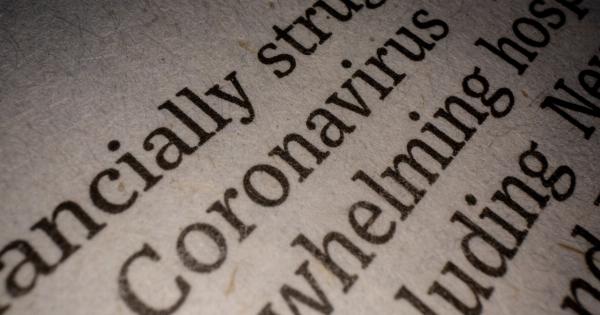We all know how important it is to eat fresh and healthy food in order to maintain a healthy lifestyle. However, despite our best efforts, we may end up consuming contaminated food at some point in our lives.
This can happen due to various reasons, such as improper handling, storage, or cooking of food. While most cases of food contamination are not serious and can be easily treated, some can lead to serious health complications and even death. In this article, we will discuss the symptoms of contaminated food and how to treat it.
What is Contaminated Food?
Contaminated food refers to food that has been contaminated by harmful substances, such as bacteria, viruses, parasites, or chemicals.
Contamination can occur at any stage of the food production process, including harvesting, processing, packaging, and transportation. Common causes of food contamination are poor hygiene, improper handling and storage, and use of contaminated water and soil.
It is important to note that not all contaminants are harmful, and some may even be beneficial for health, such as probiotics found in fermented foods.
Symptoms of Contaminated Food
The symptoms of contaminated food can vary depending on the type of contaminant, the amount ingested, and the individual’s tolerance level. Some common symptoms of contaminated food are:.
- Nausea and vomiting
- Diarrhea
- Abdominal pain and cramps
- Fever
- Headache
- Muscle aches
- Weakness and fatigue
In some cases, contaminated food can lead to more severe symptoms, such as:.
- Blood in stool
- Dehydration
- Seizures
- Blurred vision
- Difficulty breathing
- Organ failure
Common Types of Contaminants in Food
There are several types of contaminants that can be found in food, including:.
- Bacteria: The most common bacteria found in food are Salmonella, Listeria, E. coli, and Campylobacter. These bacteria can cause severe food poisoning and may even lead to death in some cases.
- Viruses: The most common viruses found in food are Norovirus and Hepatitis A. These viruses can cause severe gastrointestinal symptoms and can be easily transmitted through contaminated food and water.
- Parasites: The most common parasites found in food are Toxoplasma, Giardia, and Cryptosporidium. These parasitic infections can cause severe diarrhea, vomiting, and abdominal pain.
- Chemicals: Chemicals such as pesticides, heavy metals, and toxins produced by fungi can contaminate food and cause long-term health effects such as cancer and organ damage.
Treatment of Contaminated Food
The treatment of contaminated food depends on the type and severity of the contamination. In case of mild symptoms, such as nausea and diarrhea, it is recommended to stay hydrated and avoid solid food for a few hours.
Electrolyte solutions, such as Pedialyte, can help replace lost fluids and minerals. Over-the-counter medications, such as antidiarrheals and antiemetics, can help alleviate symptoms.
In case of severe symptoms, such as persistent vomiting and diarrhea, medical attention should be sought immediately. In some cases, hospitalization may be necessary to prevent dehydration and to administer intravenous fluids and antibiotics.
Blood and stool tests may be conducted to identify the type of contaminant and to determine the best course of treatment.
It is important to note that prevention is the best way to avoid contaminated food.
By following basic food safety guidelines, such as washing hands before handling food, cooking food to the recommended temperature, storing and refrigerating food properly, and avoiding cross-contamination, the risk of food contamination can be greatly reduced.
Conclusion
Contaminated food can cause a variety of symptoms, ranging from mild stomach upset to life-threatening conditions.
By being aware of the types of contaminants in food, the symptoms they cause, and the methods of treatment, we can better protect ourselves and our loved ones from food contamination. Remember to always follow food safety guidelines and to seek medical attention if you experience severe symptoms.





























